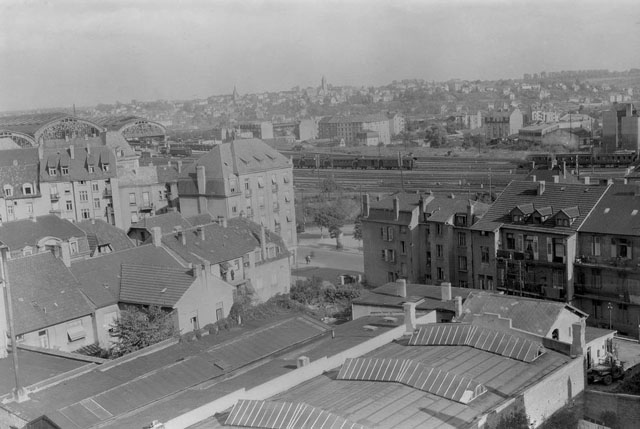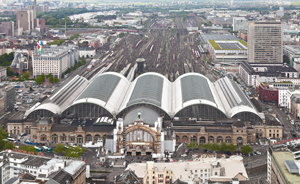Two days ago a fascinating project came to my attention. Levi Bettweiser collects undeveloped rolls of film, develops them, scans the negatives, and archives the discoveries online. His project, “Rescued Film,” is getting some press because he just released some photos from a batch of 31 film rolls from World War II. This collection is particularly interesting because Bettweiser says he rarely finds this many rolls from the same source.

Credit: Levi Bettweiser
Lost to time
Bettweiser didn’t know the identity of the photographer when he obtained the film and research is ongoing about who took the photos. A German friend of mine identified one of the photos as a scene of the Frankfurt train station. Whether or not the photographer is identified, there is at least a small amount of the human experience to be appreciated from these photos. Even the mundane moments can hold meaningful tidbits to historians, and seeing the world through this photographer’s eyes gives us a very particular perspective of World War II.

To me, the biggest question that comes to mind when I view the photos is: Why were they never developed? The most likely answer is that the soldier who took them wanted to forget the war. In some ways, I see this collection as a kind of time capsule, but if the soldier wanted to forget, then this is an odd time capsule. Whatever the case, I still see a certain resemblance to time capsules.
What’s the point?
In her archaeology blog “Rust Belt Anthro,” Kaeleigh Herstand describes time capsules this way:
“They’re basically archaeology-in-reverse: instead of researching and interpreting the material traces (ruins) that others have left behind (usually unintentionally), time capsules intentionally assemble and bury the material traces that people in the future will find and interpret, and their creators do their best to direct and guide those interpretations from the present, knowing that despite their best efforts, certain things may be lost along the way. Time capsules can therefore be seen as intentional, ideal ruins that represent deliberate history- and place-making activities.”
What a beautiful expression of the attraction that time capsules generate. Some are buried and then opened a short time later. Sometimes I look at those projects as futile and a little silly, but according to Herstand’s definition, we can at least learn about the people who buried short-term capsules, through the things they chose to preserve, even if those things appear silly or useless at first glance.
Other notable capsules
There are a couple of other time capsule projects that have generated press lately – The Andy Warhol boxes, and the Boston capsule. Earlier this month, a capsule that is considered to be the oldest in the U.S., buried under the Massachusetts state house in Boston in 1795, was opened by conservators. It contained items placed there by John Adams, Paul Revere, and others. The items appear to have survived remarkably well. Take a closer look here: Boston time capsule
The Andy Warhol boxes are an ongoing project that he sealed and stored throughout the later part of his career. Essentially, he always had a box in his office, and threw crap in it. Letters, invitations, newspapers, jars of nail clippings. When it was full, he would tape it up, have it put in storage, and start a new box. There are approximately 600 boxes in the collection, and archivists are currently opening them and cataloging the contents. Visit the Warhol museum site to see more about their work. (I also have another post about a recent digital Warhol find, and digital preservation, here.)
More information
If you are interested in more info about the Rescued Film project, or if you have undeveloped film to donate, visit Bettweiser’s site here: http://www.rescuedfilm.com
Here is another amazing personal photo preservation project. These are from a German soldier in World War I: The Walter Koessler project
Have you ever made or opened a time capsule? Tell us about it in the comments. What did you learn?
“HOLY BULL DIDN’T WIN…” 1994 derby time capsule shocker. I remember us wanting to dig it up and add that information.